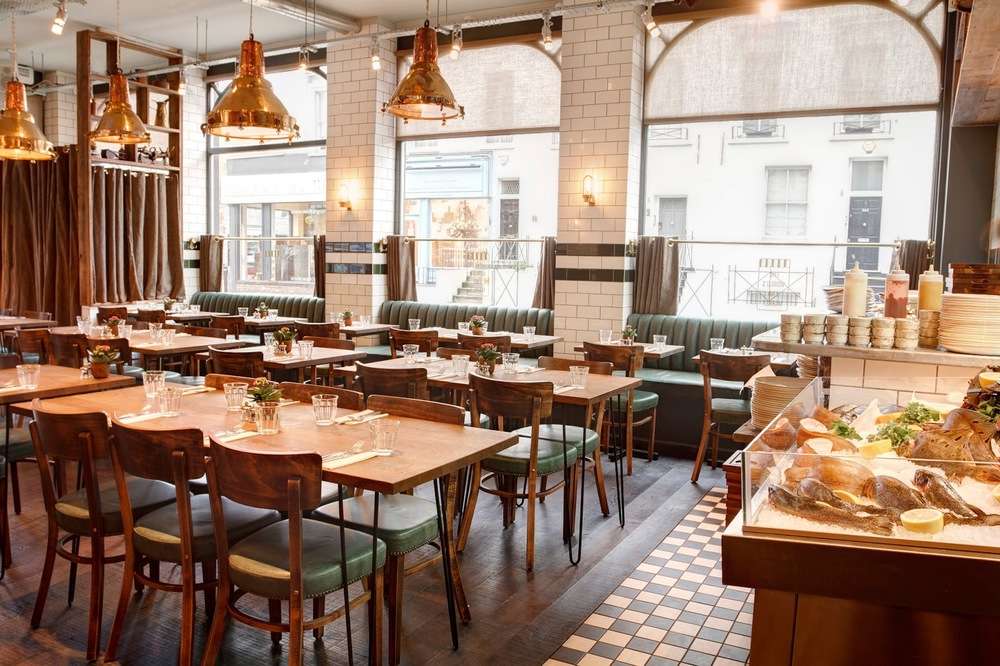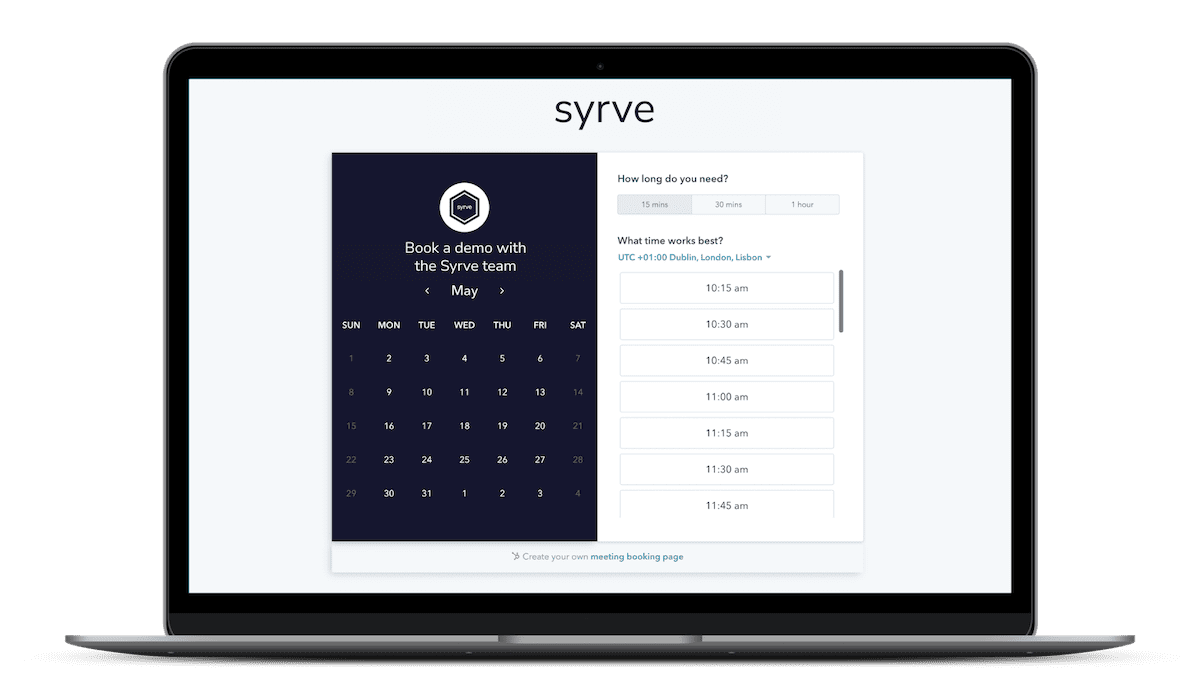Are you exploring the best options for adding a new Point of Sale (POS) system to your restaurant, café, bar or pizza outlet? Maybe you’re brimming with questions — but you can only find crumbs of information. If so, then it’s time to fill up on the facts. We’ve served up the top questions and answers all in one place.
Q1: What is a Restaurant POS System?
In a modern context, a restaurant POS system is one that is used to manage all key operational areas of a restaurant or F&B establishment, from front to back of house. This includes order taking, kitchen and inventory management, purchasing, menu planning and staffing.
Traditionally, the term was used described a single point of sales system such as a cash register or fixed POS terminal. But the latest, most advanced platforms integrate all process into an centralised end-to-end system that can monitor, automate and streamline F&B operations.
Q2: How does a restaurant POS system work?
People picture someone with a tablet, taking orders at tables or a bar, or even ringing up a sale on a cash register. But the leading restaurant POS systems do much more than that. The very best ones handle virtually all your processes in a simplified way, yet are able to support your business as it grows and becomes more complex.
A top POS can handle everything, end-to-end, including:
- Front-of-house: Reservations and bookings, kitchen management, delivery, customer management and loyalty programmes.
- Back-of-house: Menu management, forecasting, inventory management, purchasing and staff scheduling.
- Executive visibility and control: With reports into sales, costs and all manner of key performance indicators across single locations or multi-site operations.
In essence, a good restaurant POS system will help you manage all aspects of your business to maximise margin control and ROI. It will also enable you to streamline many time-consuming tasks. Highly-automated electronic systems eliminate manual processes, paper shuffling, and lost records. Plus deliver the vital insight and controls too.
But you’ll get sophisticated new powers too. The latest tech can be predictive — using data and artificial intelligence for sales forecasting, automated prep plans and suggestive purchasing to help improve decision making and simplify processes.
And yet, the best POS systems will be as easy to use as the most intuitive online experiences.
Q3: Why should you use a POS system in a restaurant?
All restaurants need a POS system. Smart restaurant managers, however, will want a POS to reduce costs, earn extra revenue, and make their day-to-day lives easier — and save them time. The best tech will do just that! It should be easy to use, and provide you with a swift return on your investment.
A good POS system will be like having an extra player in your team — someone who’s always on top of the figures, watching your business like a hawk, and saving you from hours of gruelling admin. A top POS will also have the built-in intelligence to self-perform functions and provide you with accurate predictions and insights to control your business better.
As well as saving you time and money, a good POS will get accurate data flowing in your business that connects up processes. Everything can be tracked, from reservations and sales, through to inventory, purchases, loyalty programmes and more. You’ll be in control of your business like never before.
Want to find out more? See how a leading POS is helping popular restaurant The World’s End Market to thrive in London’s competitive restaurant scene.
Q4: How much do small restaurants use the POS software?
It’s possible for smaller cafes, bars and restaurants to ‘wing it’ without a POS — or persevere with a half-baked solution that only gives them a handful of tools.
But this raises a question: Are you really in control of your business and its cost base? Cash is undeniably the lifeblood of your business and when it’s hemorrhaging money, it’s in critical condition. You also don’t want to spend your valuable time re-keying information, pouring over spreadsheets, and trying to figure out whether you’re making a profit or loss.
Most small restaurants and business owners would rather be out there with customers, than getting stuck for hours in the back office. Fortunately, the right POS tools make this possible. They are easy to use and give you incredible control at your fingertips. A good ePOS for a restaurant will help you to manage margins more effectively and grow more easily too, especially if you open more venues.
Q5: What are the best features of restaurant POS software?
Restaurant POS systems will vary enormously. The best can be described as ‘all in one’ systems because they cover all the essentials — and won’t leave any gaping holes in your business processes.
In fact, a top POS will go further by offering sophisticated features that accelerate business growth while keeping you in control, thanks to central management, inventory and cost controls, and real-time reporting for multi-site operations.
When comparing solutions, it’s good to look for an easy-to-use interface, built-in controls that standardise how you operate, accurate forecasting capabilities, and alerts that are sent to you if something’s amiss. You’ll want to:
- Manage orders and tables on the go
- Switch easily between service types – quick-service, dine-in, delivery
- Keep on top of sales during the busiest hours
- Improve kitchen efficiency
- Launch menu’s and promotions
- Manage stock down to the ingredient and item level
- Manage suppliers and purchase orders with ease
- Deliver advanced loyalty promotions
However, features that will make the difference to your business’s bottom line will be in areas such as inventory control, purchasing and staff scheduling – where your biggest costs lie. Also improving kitchen efficiency and introducing more ways to generate extra revenue.
You’ll also want easy access to detailed financial reports that will tell you exactly how the business is doing, moment by moment. From a real-time view of your P&L through to detailed reports and insights on: sales by hour, category and best performers etc., stock levels including variances and wastage, labour cost and attendance, as well as security reports on voids, no-sale transactions etc.
Finally, if you are a rapidly growing, multi-site operation then you will want HQ management to take full control of your entire operations remotely, view live store data and make changes to settings, menus, products and prices – or even schedule changes for future dates for specific locations.
Q6: What is a POS inventory system?
Inventory management software for a restaurant should be a big feature of any top POS system — because food and drink represent such a significant cost. However, with the right POS, savings of up to 15% on the total cost of supplies are achievable by controlling inventory properly and by using accurate forecasts and purchases.
It’s understandable when restaurants and bars struggle with food and drink inventory management. It’s not really anyone’s job. Staff usually hate keeping records of what’s in stock, and if the restaurant is busy then there’s a strong temptation to put off the job for another day. But this can mean you over-stock and waste money, or under-stock and miss out on sales and disappoint customers.
A smart POS will give you the tools to avoid food spoilage, address food preparation waste, and monitor recipes, production and portion sizing accurately. The system will guide staff to complete stock checks. You can control how each stock item is purchased and how its sold, count stock usage and costings in real time, and manage suppliers and price points for easy purchasing and control.
Q7: How can I manage all my inventory in my restaurant?
So often, restaurants, cafes, bars and pizza outlets rely on a ‘gut feeling’ of what’s in stock and what’s needed. Perhaps kitchen staff wander around every few days, taking notes while checking fridges and storerooms — and then making a few orders to keep things ticking over? But this can lead to blind ordering, careless bulk buying and wastage. You can miss out on sales too — by running out at critical moments.
However, a good POS will schedule stock checks and guide staff to check everything in moments on their mobile phones or other devices. With the right tools, you can track inventory and food use at all your locations — and pass spare stock between them easily.
You can log waste and batch production on the POS without delay or the need to send paperwork to your back office. You can obtain a real-time view of your inventory and cost position – production, stock levels, variances and wastage. You can even predetermine preferred suppliers, place orders in a highly automated and streamlined way, and then accept items in a few clicks using a tablet or mobile phone.
In the worst case scenario — if you do run out of stock — the POS can be set to display this, so your waiting staff can manage this tactfully with customers. This avoids letting guests order something, only to give them the bad news five minutes’ later.
Put simply, with a top POS you get an accurate, end-to-end, real-time picture of what’s where — and when it needs using. You can combat errors, fraud and confusion, as well lifting a huge burden of frustration off your staff.
Q8: How can I increase restaurant sales?
Do you know which dishes earn you the highest margin? Do you know which staff perform the best? And can you predict your busiest times when most of your income is generated?
With the right POS, you can get these answers — and more besides. You can then start to optimise your business in a host of different ways to become more profitable, including:
- Being able to predict busy days, based on previous sales, guest numbers and seasons
- Using your POS to create customer rewards programmes and incentives
- Making upselling ultra-easy for your staff
- Identifying older stock in your inventory and using it to create specials
- Incorporating third-party ordering apps within your POS
Q9: What are the benefits of cloud-based restaurant POS software?
Having chosen a POS, you don’t want to spend months waiting for it to be ordered, weeks getting it installed, and then endless days getting the system to work properly. The restaurant business just doesn’t stand still for that long.
That’s why the cloud is perfect, because it’s easy to deploy, use and scale. You can avoid having to pay for a vast IT infrastructure, storage, operating systems and virus checking. With a 100% cloud-based platform and a pay-as-you-go subscription model, you can get certainty. There are no hefty up-front fees or unpredictable costs. The POS can start paying for itself from the moment you log in.
But there’s just one note of caution to add very loudly at this point. Some cloud-based POS systems rely chiefly on iPads for hardware — which can cause major headaches for restaurants. While the cloud is ideal, make sure you’re choosing hardware that’s robust and designed specifically for the rigours of food and beverage (F&B) business.
Q10: Which is the best POS system for restaurants – and why?
It’s important to choose a restaurant POS that lets you run your entire operation using a single unified business management suite — rather than a bunch of tools, apps and subscription services that fail to glue together properly and are difficult to manage.
You’ll want a technology partner that really understands your business inside out, whether you’re a small family-run cafe or a large chain of quick-service restaurants. In other words, a company that specialises in all the issues you face every day — and continually finds smarter, newer ways to address challenges and opportunities that come across your path.
Your POS supplier should have a proven track record and pride itself in its customer relationships – that means not only providing the latest features, but also offering the 5* support levels your business deserves.
Over 35,000 restaurant operators world-wide have selected Syrve. Our feature-rich POS has been perfected over years — and we invest heavily in new features to improve your business.
Find out more by reading our article on the 10 main reasons why you should choose Syrve.
Got any more questions?
We’ve covered the basics. But what else would you like to know? Contact our team and we’ll be happy to provide all the answers you need.



